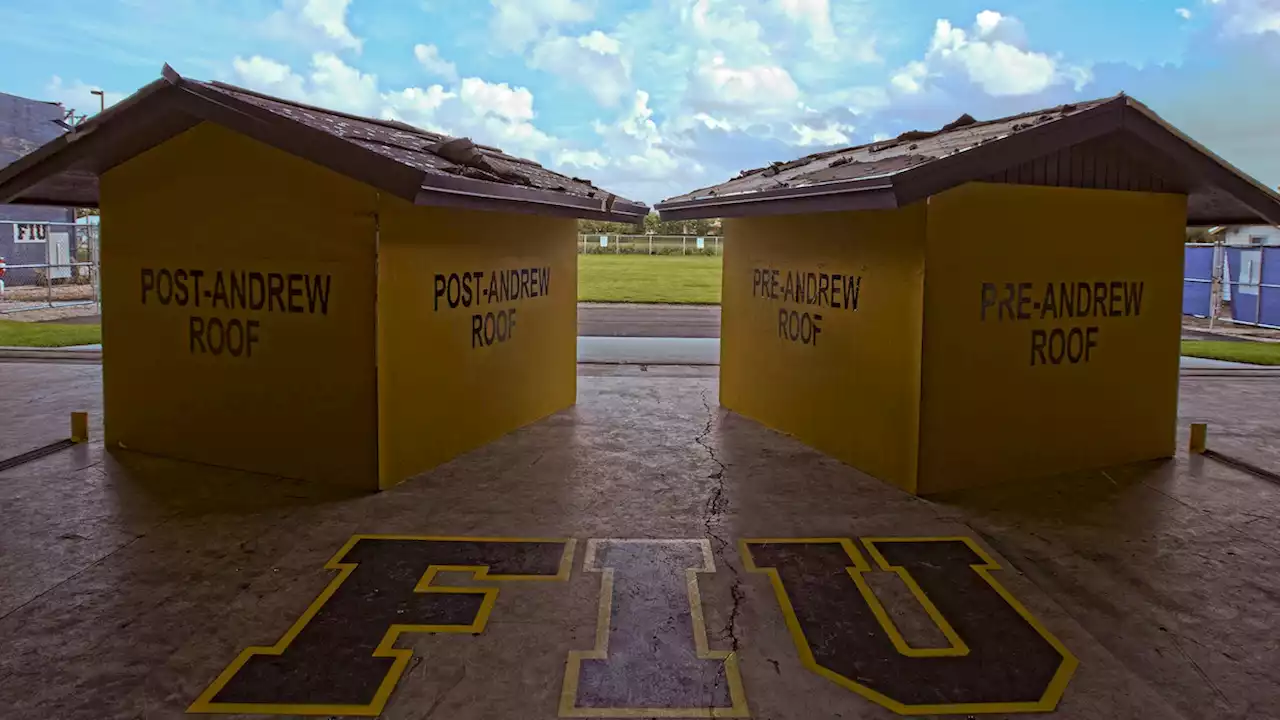The facility is the largest of its kind in the U.S. that can test top Category 5 winds. To generate such speeds, it requires fans six feet across and 15,000 pounds each, the weight of two trucks
Since then, FIU’s engineers have continued to advance the science of protecting structures. They’ve learned how small retrofits can help harden homes against ferocious winds. Indented ring shank nails, for example, hold stronger than smooth nails; four-sided roofs are most likely to stay on; and metal hurricane straps help keep roofs attached to walls.
Even blowing at just 60 mph, the roar of the fans is so loud, conversations have to be shouted. During a May test funded by the Florida Division of Emergency Management, engineers set up a two-foot plastic model of a mobile home in front of the fans to investigate where wind exerts the most pressure on manufactured homes. Wind blew across a floor covered in metal flaps and blocks that simulate buildings and trees and create turbulence.
“We will know what survives and what doesn’t survive,” says Chowdhury. “Think about being in the year 2050, and this facility’s testing has told us that ‘at 200 mph these kinds of structures can stand up to those winds, but these cannot,’ and a storm forecast is even close to that level of wind, then we will know what works.”are collaborating with FIU on the prototype.
, director of the Emergency Management and Homeland Security Program at Florida State University in Tallahassee.Stronger homes for stronger storms
